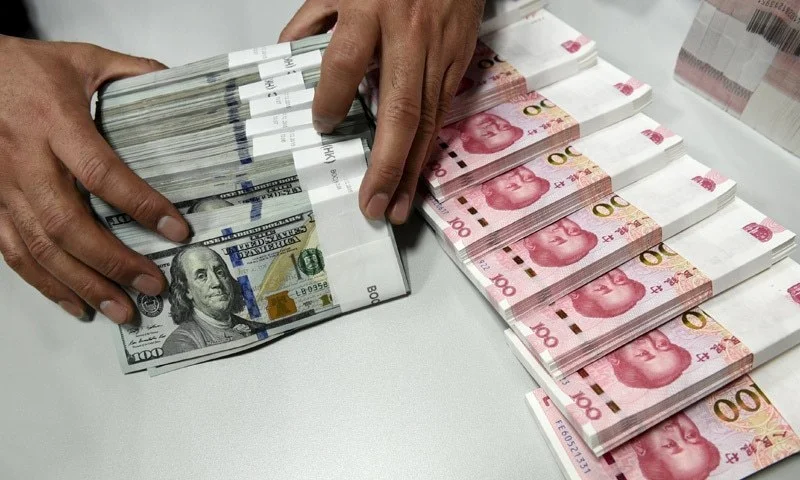According to statistics released by the central bank on Wednesday, Pakistan’s total debt and liabilities reached an unsustainable peak of Rs62.5 trillion at the end of September 2022, taking the country into uncharted territory by an increase of 24%.
The State Bank of Pakistan (SBP) reports that the country’s total liabilities, which primarily consist of government debt, increased by Rs12 trillion, or 23.7%, from the previous year.
According to the data in the central bank’s most recent debt bulletin, neither the Pakistan Tehreek-e-Insaaf (PTI) nor the Pakistan Muslim League-N (PML-N) has a plan to address our mounting debt issues.
Due to the increasing number of loans and the country’s limited ability to repay them, the fate of the nation has been left in the hands of powerful international financial institutions.
The world powers are now realising that Pakistan cannot seem to survive without continued financial support, which is causing problems in the political and security spheres.
Concerning the economy, the central bank did not disclose the proportion of Pakistan’s total debt and liabilities. In the last year, the government alone was responsible for an increase in public debt of Rs9.7 trillion.
According to the SBP, gross public debt will reach Rs51.1 trillion by the end of September 2022.
The three main political parties have not been able to pass any significant reforms to reduce debt. Instead, during its 43-month rule, the PTI increased the country’s debt to an unprecedented level.
Former Prime Minister Imran Khan promised to prioritise debt reduction while blaming his predecessors for plunging the country into debt. However, when he left office in April 2022, his administration had added Rs19.5 trillion to the federal government’s total debt stock.
Pakistan’s Finance Minister, Ishaq Dar, pleaded for additional loans during his visits to China, Saudi Arabia, and the United Arab Emirates this year.
To secure loans, the government is also in talks with foreign commercial banks, the World Bank, and the International Monetary Fund (IMF).
There was a clear mismatch between the rise in public debt and the increase in the budget deficit, demonstrating the negative impact of currency devaluation on the external debt stock.
Due to the growing ties between Pakistan, the international financial institutions (IFI), and Washington, Pakistan’s total external debt and liabilities have remained nearly unchanged at $127 billion in the last year.
However, due to the rupee’s depreciation, there was a massive increase in external debt.
At the end of September, Pakistan’s total external debt increased to Rs26.5 trillion, up Rs6.8 trillion or 35% from the previous year. The federal government’s external debt, excluding IMF loans, rose from Rs17 trillion to Rs18 trillion in a single year.
Due to the depreciation of the rupee and the country’s efforts to increase its foreign currency reserves through borrowing, there was a net increase in external debt of Rs1.3 trillion.
According to the SBP, Pakistan’s IMF debt increased by 44% in one year to Rs1.7 trillion by the end of September. This is true even though during this time, the IMF released about $2 billion less than what was planned.
The total domestic debt owed by the federal government increased to Rs31.4 trillion, up Rs5 trillion or 19%, in a single year.
The main reasons for the increase in public debt were lower-than-expected tax collection, steep currency devaluation, high-interest rates, rising expenditures, losses incurred by state-owned businesses, and debt mismanagement.
According to the central bank, the average exchange rate on the last day of September 2022 was Rs228 to a dollar, reflecting a 57.4% depreciation in just one year. This had a significant effect on the government’s external debt.
The cost of debt servicing has significantly increased as a direct result of the growing debt load. Debt servicing amounted to Rs1 trillion in just one quarter of the current fiscal year.
According to the government’s updated estimates, debt servicing expenses may total more than Rs4.7 trillion, or about Rs750 billion more than had been budgeted.












